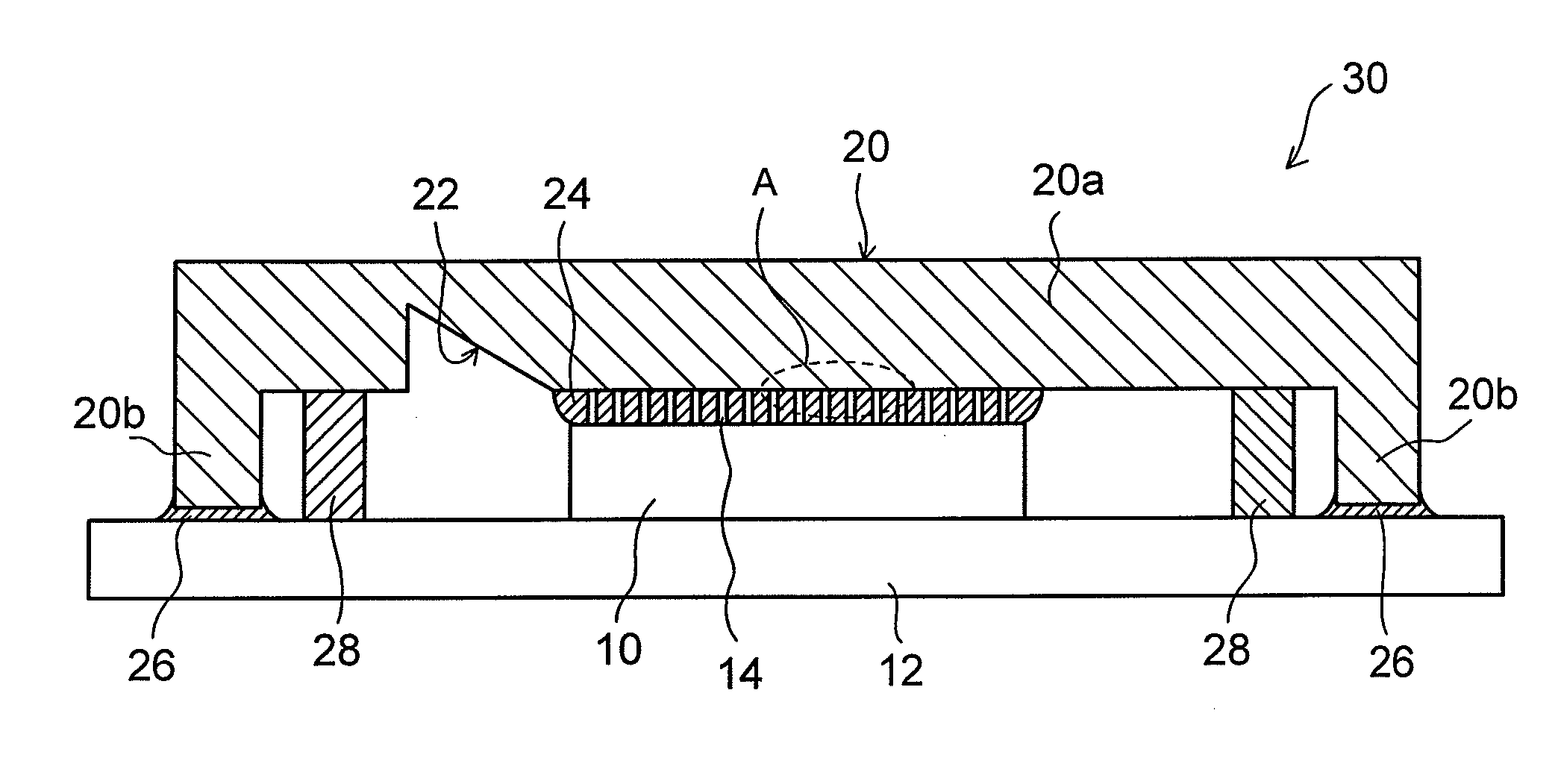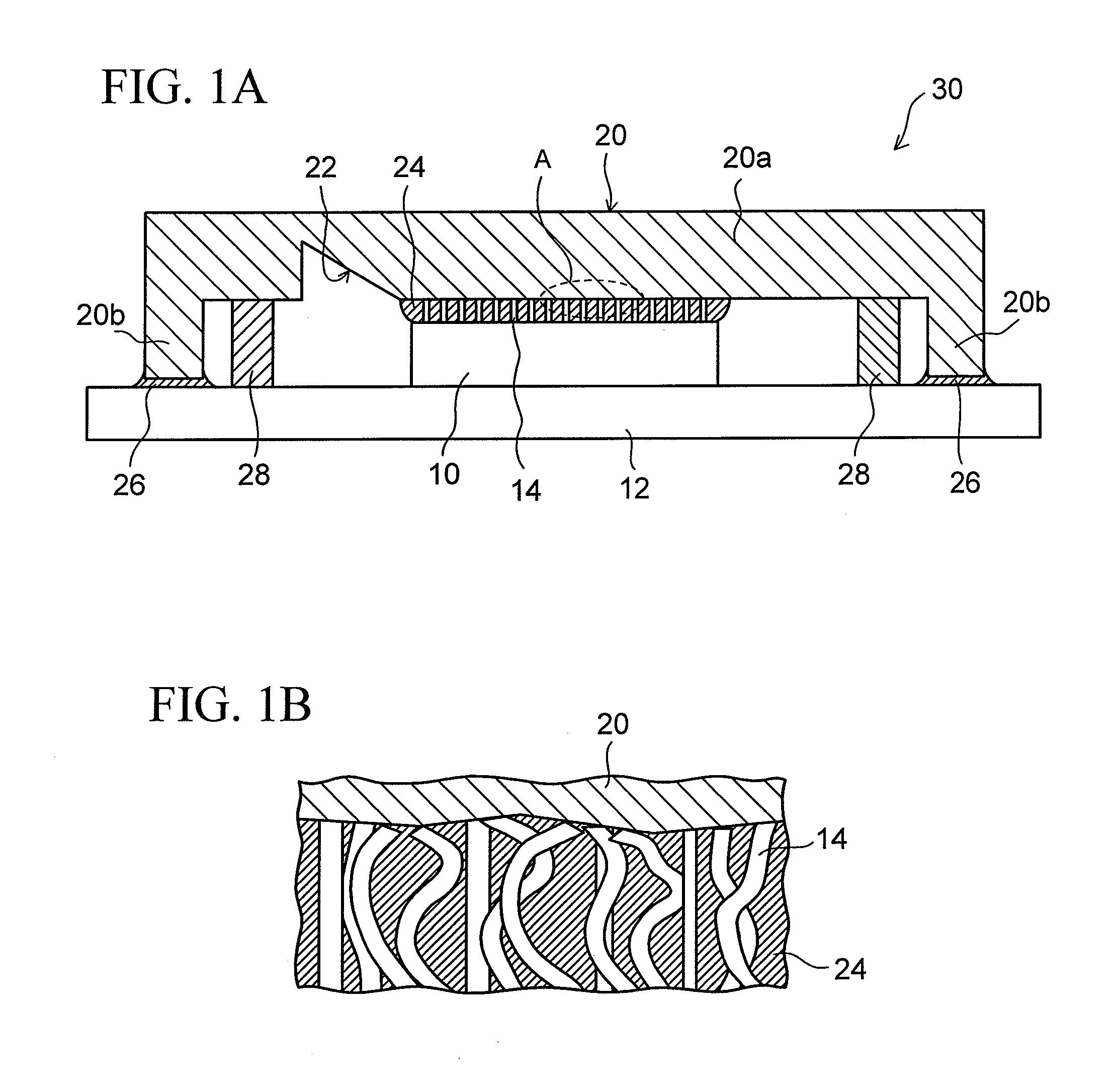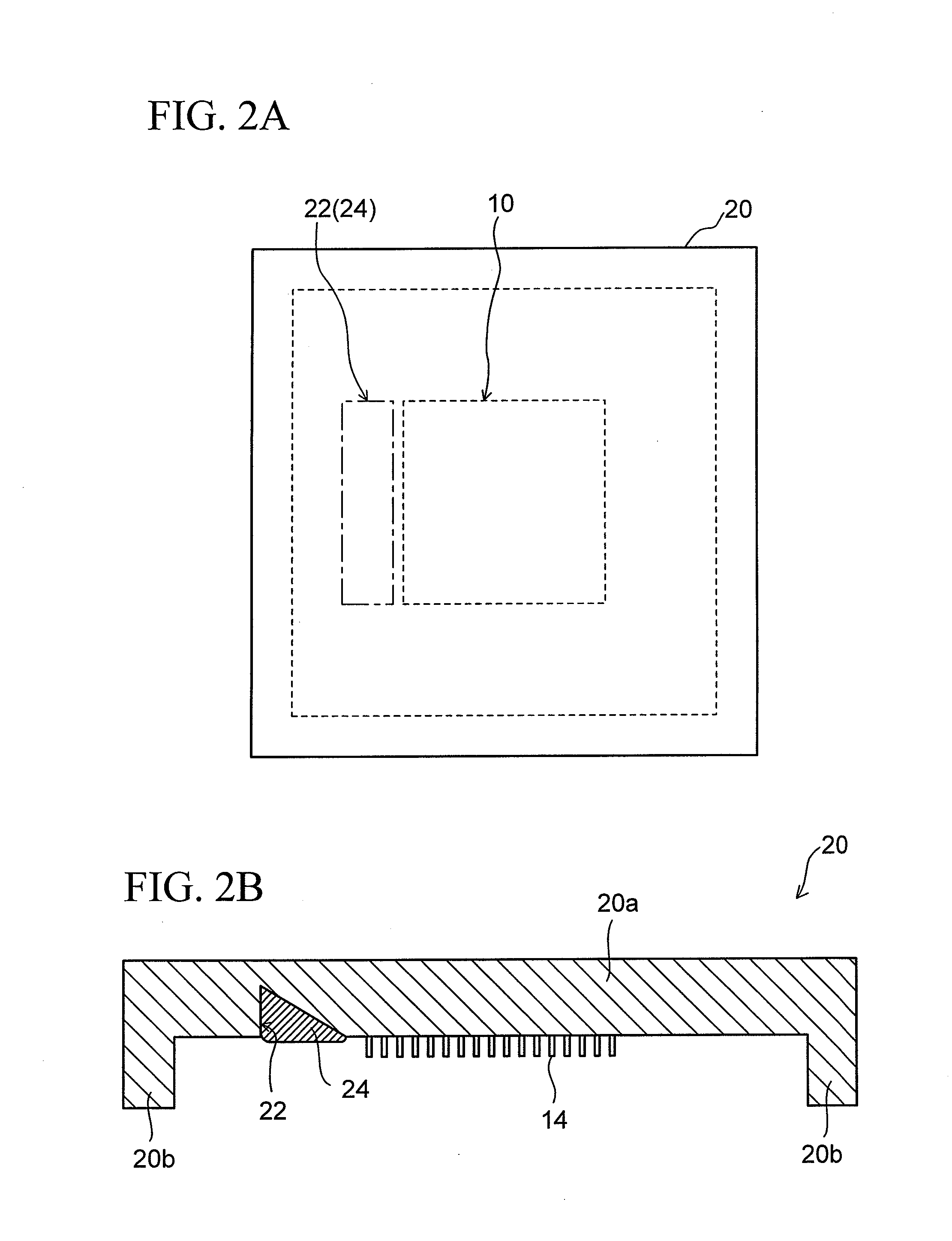Method of manufacturing electronic component device
a technology of electronic components and manufacturing methods, applied in the direction of printed circuit manufacturing, printed circuit assembling, electrical apparatus construction details, etc., can solve the problems of insufficient demonstration of properties, broken down, and inability to demonstrate the intended performance of the semiconductor element, and achieve stable thermal coupling and favorable thermal conductivity of the semiconductor elemen
- Summary
- Abstract
- Description
- Claims
- Application Information
AI Technical Summary
Benefits of technology
Problems solved by technology
Method used
Image
Examples
Embodiment Construction
[0027]Description is given below with regard to preferred embodiments of the present invention with reference to the accompanying drawings.
[0028]FIGS. 1A and 1B show the configuration of a semiconductor device (electronic component device) using a thermal interface material according to an embodiment of the present invention. FIG. 1A shows a sectional structure thereof, and FIG. 1B shows an enlarged sectional structure of the part A in FIG. 1A.
[0029]In a semiconductor device 30 of this embodiment, reference numeral 10 denotes a semiconductor element (chip) serving as an electronic component from which heat should be released. The semiconductor element (chip) 10 is mounted on a wiring board (package) 12 with a face surface (the surface on the side where circuits are formed) of the chip 10 facing downward. Although the specific illustration of a connection portion between the wiring board 12 and the chip 10 is omitted, the configuration of this portion is the same as a normal configur...
PUM
| Property | Measurement | Unit |
|---|---|---|
| Thickness | aaaaa | aaaaa |
| Electrical conductor | aaaaa | aaaaa |
| Area | aaaaa | aaaaa |
Abstract
Description
Claims
Application Information
 Login to View More
Login to View More - R&D
- Intellectual Property
- Life Sciences
- Materials
- Tech Scout
- Unparalleled Data Quality
- Higher Quality Content
- 60% Fewer Hallucinations
Browse by: Latest US Patents, China's latest patents, Technical Efficacy Thesaurus, Application Domain, Technology Topic, Popular Technical Reports.
© 2025 PatSnap. All rights reserved.Legal|Privacy policy|Modern Slavery Act Transparency Statement|Sitemap|About US| Contact US: help@patsnap.com



